
Planting Guide: Witch Hazel Plant Care
Published: 10/02/2023 | Updated: 18/04/2023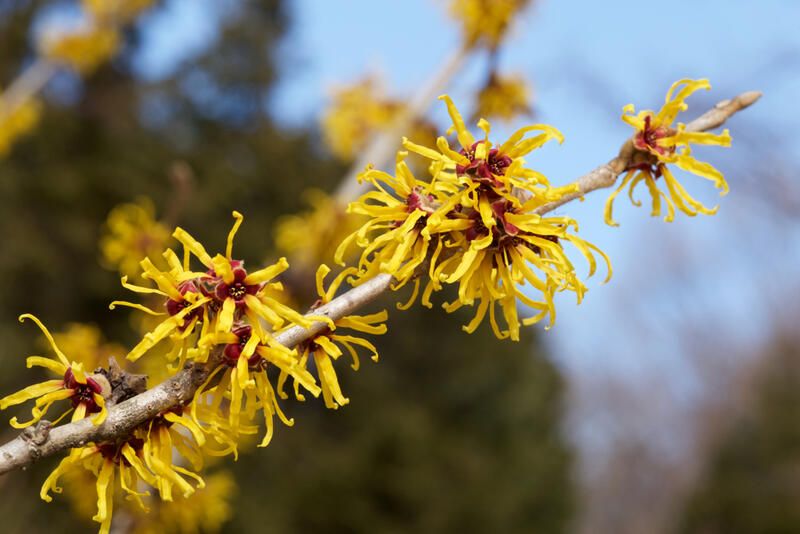
If you haven't heard of witch hazel, you've been living under a rock for the last few years. Witch hazel has been on the buzz for the last few years not only for its medicinal qualities but its therapeutic qualities as well. We're here to tell you, you can enjoy all these qualities in the comfort of your backyard!


This deciduous shrub is a lovely choice for gardening in the winter. In the fall and winter, it produces vivid, aromatic, spider-like blossoms. Their fragrant yellow flowers have become a staple for winter.
This simple-to-grow shrub prefers a sunny location and has blossoms that can brighten even the darkest winter day. The tiny, tassel-like blossoms, which are strung along the barren branches and come in vibrant yellow or flaming orange, waft their fragrant smell throughout the yard. The witch hazel plant is incredibly resilient. In contrast to other flowering plants, witch hazel thrives in chilly temperatures, it needs it to be able to develop that striking yellow blossom. Because of this, these plants stand out dramatically in a sparkling winter scene. Although the blossoms of witch hazel plants are not as spectacular as those of some other plants, they have an outstanding scent.
General Information for Witch Hazels
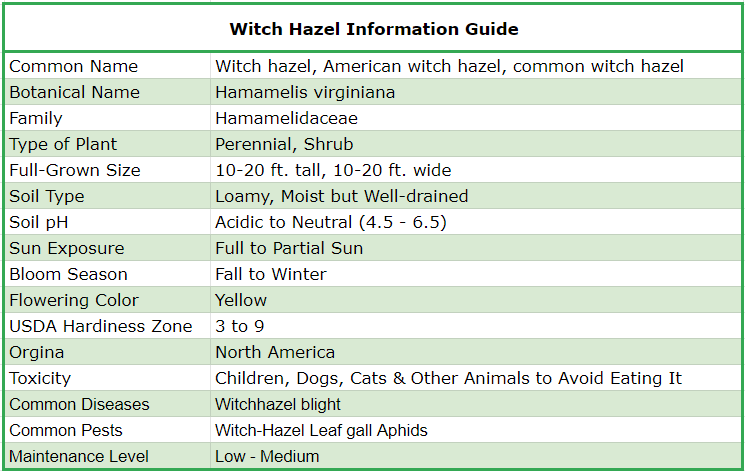
Choosing a Variant
Choose the witch hazel species or cultivar that best suits your garden based on its color, scent, and eventual size and spread. Some of our favorite types of witch hazels are:
-
Japanese witch hazel
-
Chinese witch hazel
-
American witch hazel
Care for Witch Hazel
Once established, witch hazel is a very low-maintenance plant. Only the occasional watering and pruning are necessary. For optimal results, plant this shrub in late fall or early spring. If the climate is extremely hot it's best to get some afternoon shade, but overall a sunny site is ideal.
The majority of pests and illnesses are not harmful to these bushes. Witch hazel shrubs may be attacked by deer, aphids, leaf spots, or powdery mildew, but these pests often do not do significant harm.
Soil
Although witch hazel is fairly resilient and adaptable, it prefers rich, loamy, moist soil conditions. Both acidic and alkaline soil pH values can be tolerated by these plants, while acidic to neutral soil is preferable.
For healthy witch hazel plants, wet conditions and good drainage are critical. If you want to keep the moisture in the soil, try spreading a layer of mulch on top.
Sun Exposure
Witch hazel grows best in full sun but is also okay with partial sun. Witch hazel enjoys more sun but hotter regions will need some shade for better growth.
Humidity & Temperature
Witch hazel is distinctive in that it blooms in the chilly wintertime. It can survive in a wide range of environments, from USDA zones 3 to 9, and does well in both cold and hot climates. The ideal humidity level is moderate. Witch hazel does not thrive in dry, arid environments, but excessive moisture can promote fungus issues like powdery mildew.
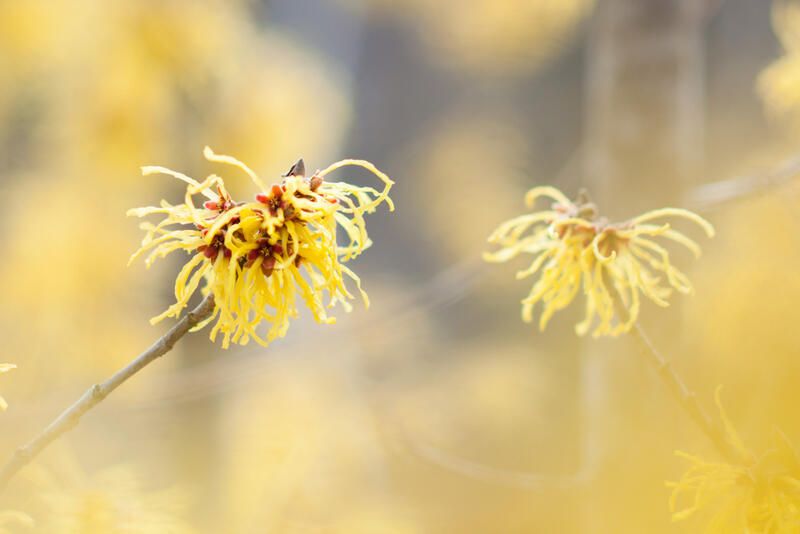
Water
This shrub prefers constant rainfall, although it struggles in mucky soil. Young, developing plants require regular irrigation. Once established, witch hazel shrubs should have ample water from natural rainfall. However, if there is a drought, make careful to water these plants. It might be time for more water if the top of the soil feels dry to the touch.
Fertilizer
Composting the soil creates rich, loamy soil that is perfect for growing witch hazel since it balances the soil's capacity to retain moisture and drain well. For enhanced nutrients during the summer, balanced liquid fertilizer or fertilizer made from organic matter can be applied each month.
How to Grow Witch Hazel
Witch hazels should not be planted if the ground is frozen or soggy between October and April. Witch hazels grown in containers can be planted at any time, but they require regular, careful watering during the spring and summer to keep the soil moist.
The majority of witch hazel varieties are grafted onto the rootstock of Hamamelis virginiana. The "dealing with suckers" section below has more details on how to deal with suckers. The rootstock can occasionally generate suckers (shoots).
Avoid planting too deeply and only burying the topmost roots in the soil to minimize suckering issues. The graft union can be seen as a bulbous portion of the stem close to the ground.
Propagating
Seedlings
This works well for species, but not for cultivars because you'll get something new and different. After all, they don't grow true from seed.
Place ripe seed capsules in a covered tray if you want to start plants from seeds; the capsules will explode and release seeds. Fresh seeds should be sown, and they should be overwintered in a cold frame so they can sprout the following spring.
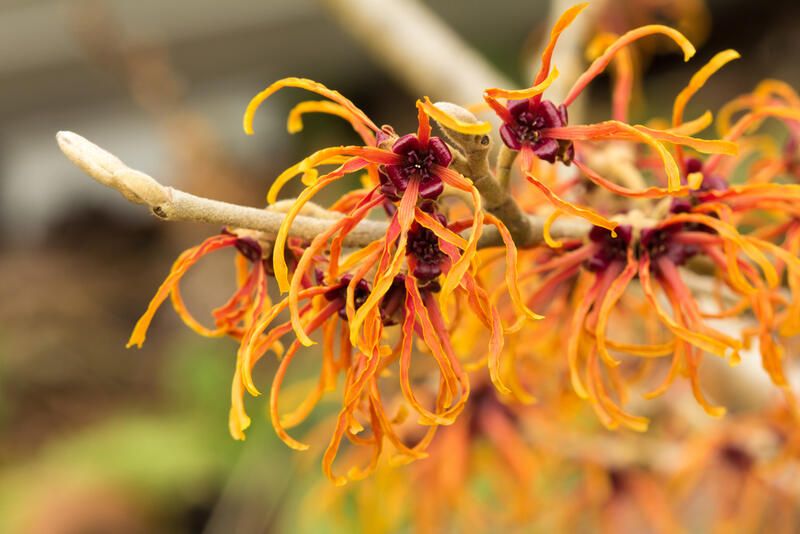
Grafting
The majority of witch hazels grown for commercial purposes are grafted or budded onto Hamamelis virginiana rootstocks, which accounts for their high purchase costs. The species plants, like Hamamelis Mollis, and the rootstocks are grown from seeds. The cultivar is grafted once the rootstocks of the seedlings have grown sufficiently.
Try grafting at home if you want to. Although challenging, grafted plants may bloom in four to five years if they are successful.
Cuttings
Witch hazel cuttings are difficult to root or maintain alive. Midway through spring, take softwood cuttings using compost for cuttings that drain very well, such as 40 percent peat-free multipurpose compost, 30 percent perlite, and 30 percent composted bark.
Layering
Try layering your current plants as an additional strategy for boosting your stock. Although it takes a few years, trying is quite simple.
Pruning
Although pruning is not necessary, a regular trim-up can assist preserve a tidy form and promote blooming. After the shrub has finished blooming, prune to promote the development of buds for the following year. To keep this plant neat and orderly, cut off any suckering offshoots at the base.
Additionally, witch hazel branches can be pruned just before blossoming and brought inside to bloom.
Potting/Repotting Witch Hazel
Witch hazel can be grown in a pot, but if you want the plant to grow to its maximum height, it will eventually need to be placed in the ground. Smaller gardens are ideal for witch hazel shrubs housed in containers, which may be relocated in the summer to make place for summer-blooming plants.
When the witch hazel has outgrown its pot, either plant it in the ground or transfer it to a bigger pot. Since witch hazel does not adapt well to transplanting, try to avoid disturbing the roots while doing this. Spring is the ideal time to complete this.
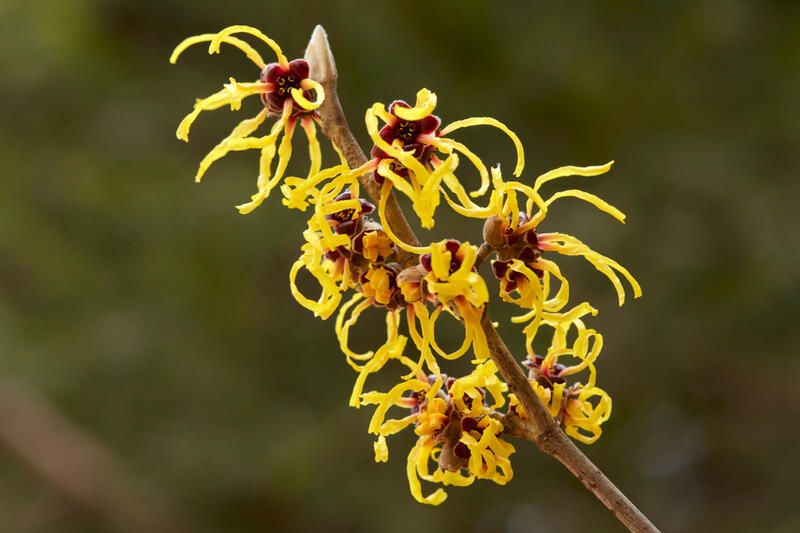
Overwintering
Witch hazel flourishes in the chilly winter months because of its distinctive winter blossoms. Throughout the winter, you should occasionally inspect the witch hazel plant for any damage caused by rabbits or deer. If harm is done, a safeguard can be erected around the plant, such as hardware cloth or chicken wire.
Pests and Diseases
Witch Hazel is not significantly harmed by any recognized diseases. Some fungi can cause spotting on the leaves, and they are susceptible to them, but the plant won't be significantly harmed.
Harvesting Witch Hazel
Witch hazel twigs and leaves can be collected throughout the growing season, but spring is the best time to harvest them because the sap is running, and the leaf development is new.
Cutting small, leaf-bearing branches from mature trees will yield both. Trim the twigs into smaller sections of around 1 inch after removing the leaves (2.5 cm). You can use a tiny knife to remove the outer bark from bigger twigs or branches. All components can be utilized right now or dried for subsequent usage in baskets or on screens.
Benefits of Witch Hazel
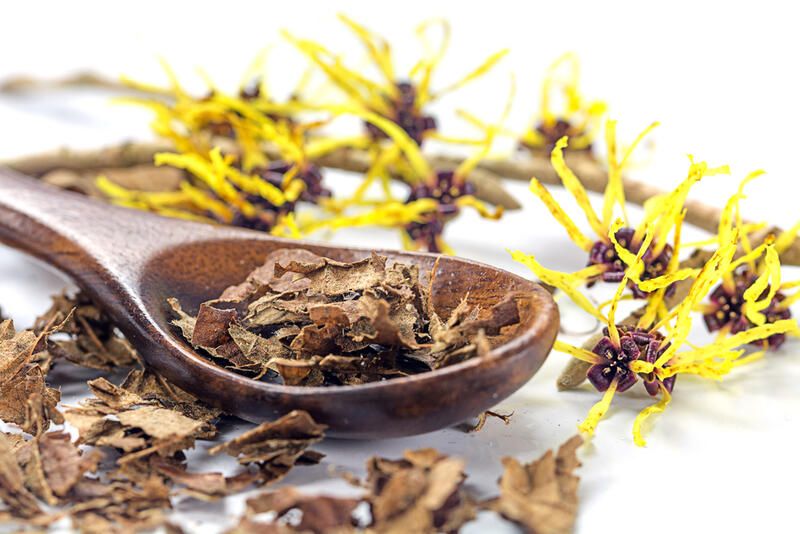
There are several uses for witch hazel, a plant with potent medicinal purposes. Witch hazel has been known for its heady fragrance and garden merit as well as its beauty from its bright yellow flowers. However, witch hazel extract has been known to be beneficial for many reasons. Here are some of our favorites:
-
Relives Inflammation
-
Reduces Skin Irritation
-
Fights Acne
-
Alleviates Sensitivity on Your Scalp
-
Soothes Sore Throat
-
Protects Against Skin Damage
-
Wards off Infections


